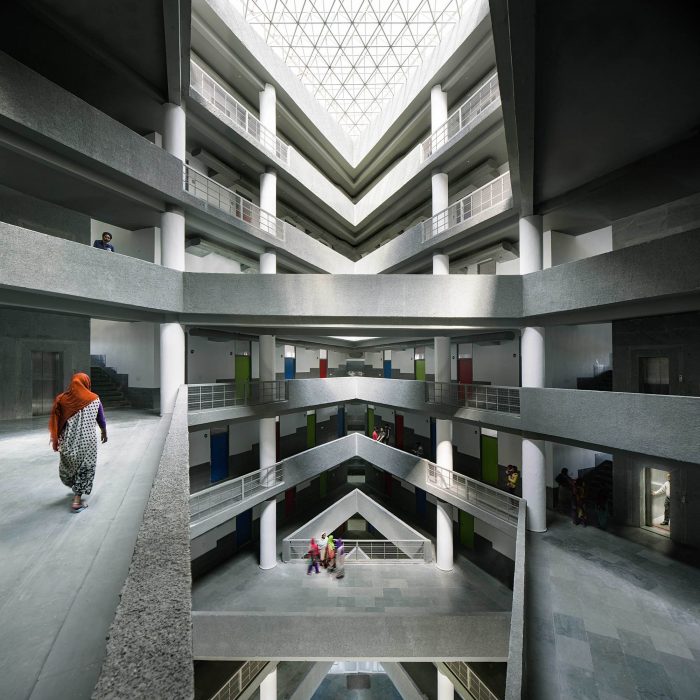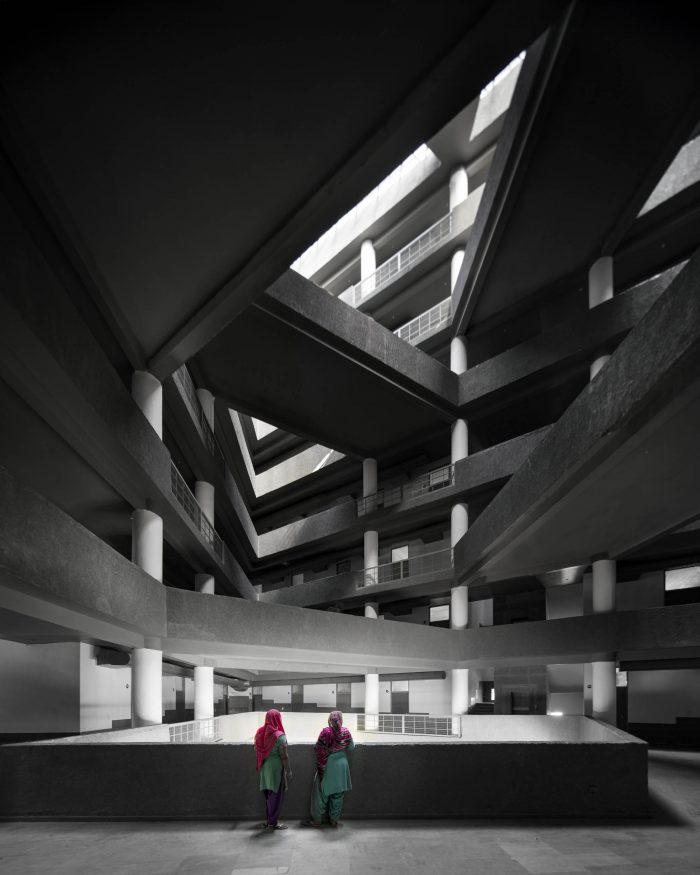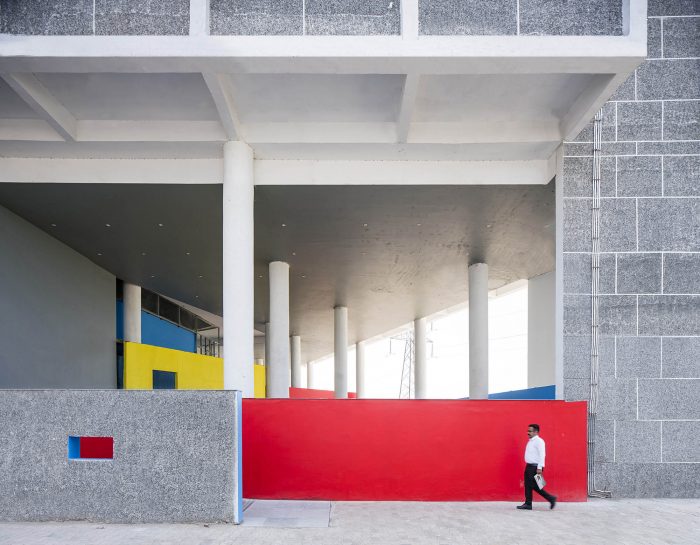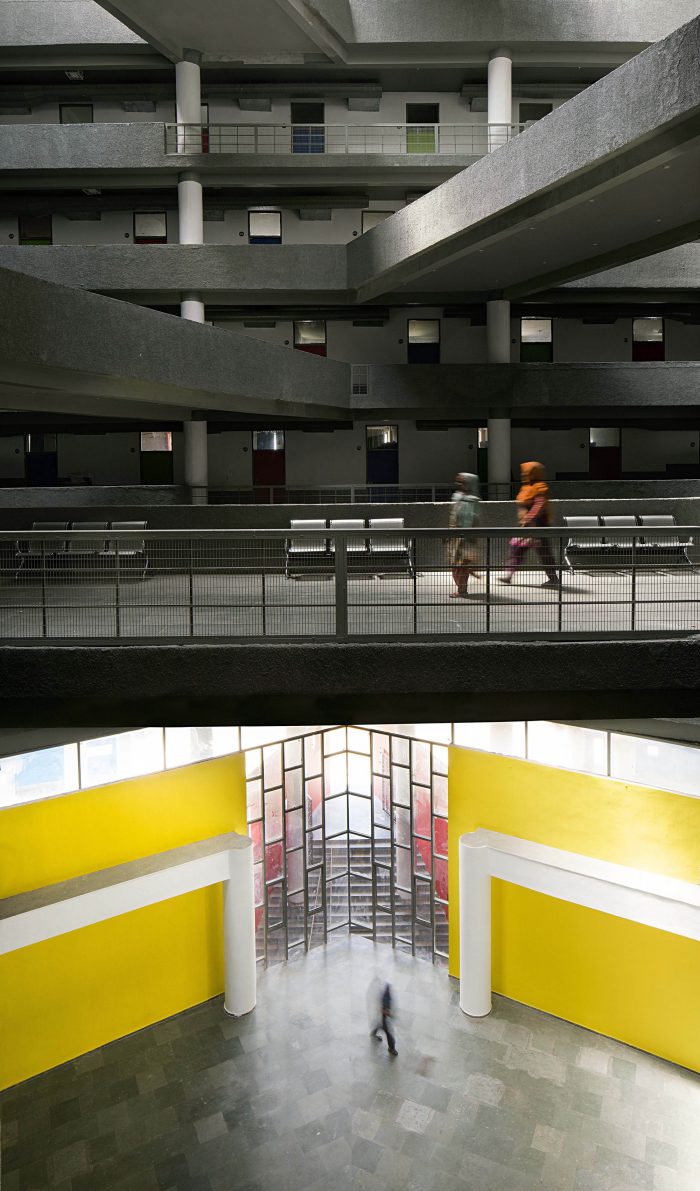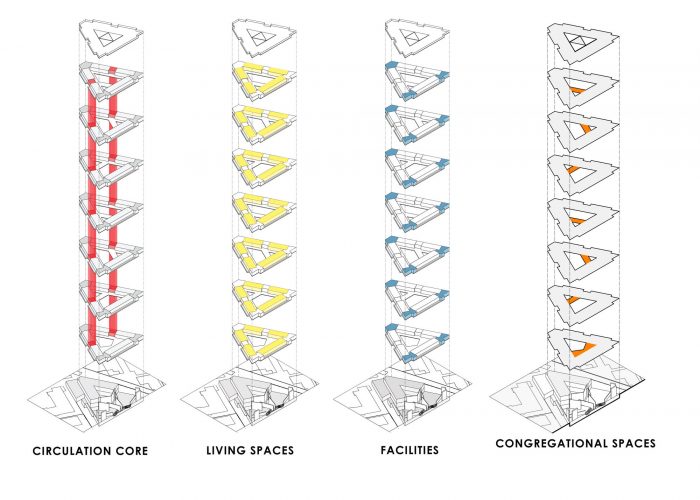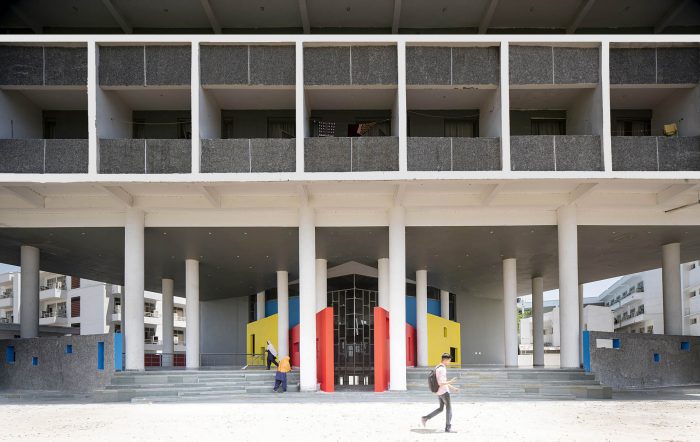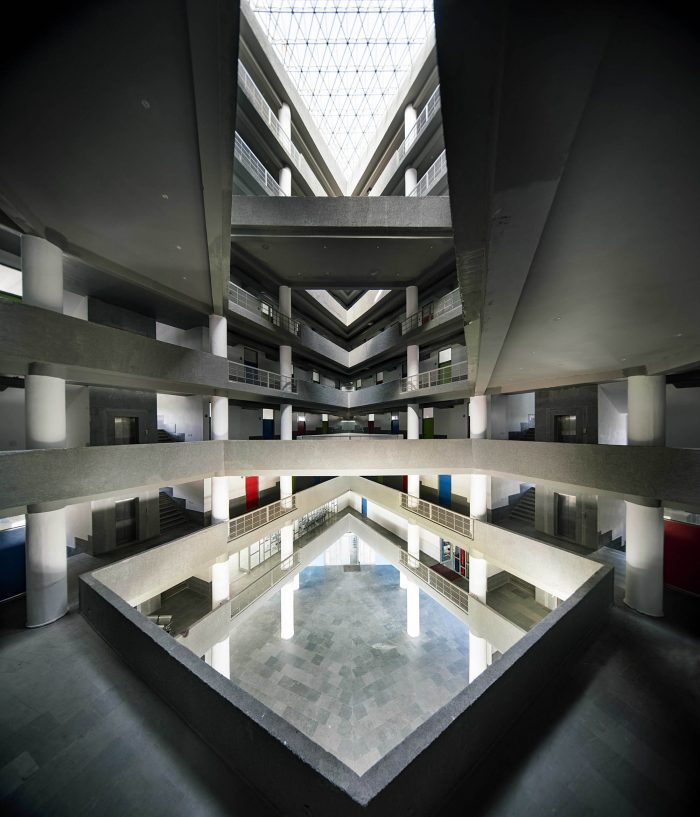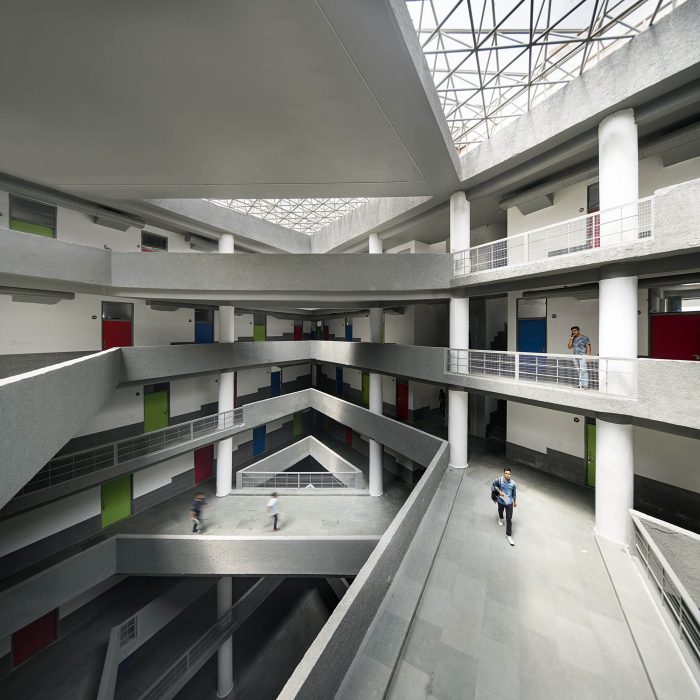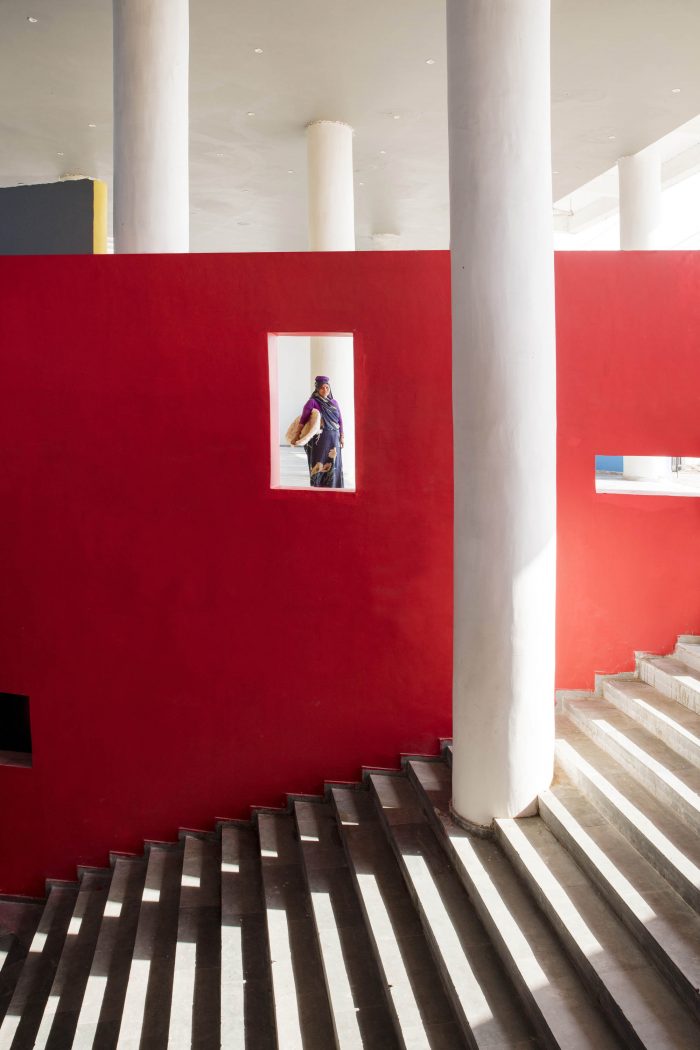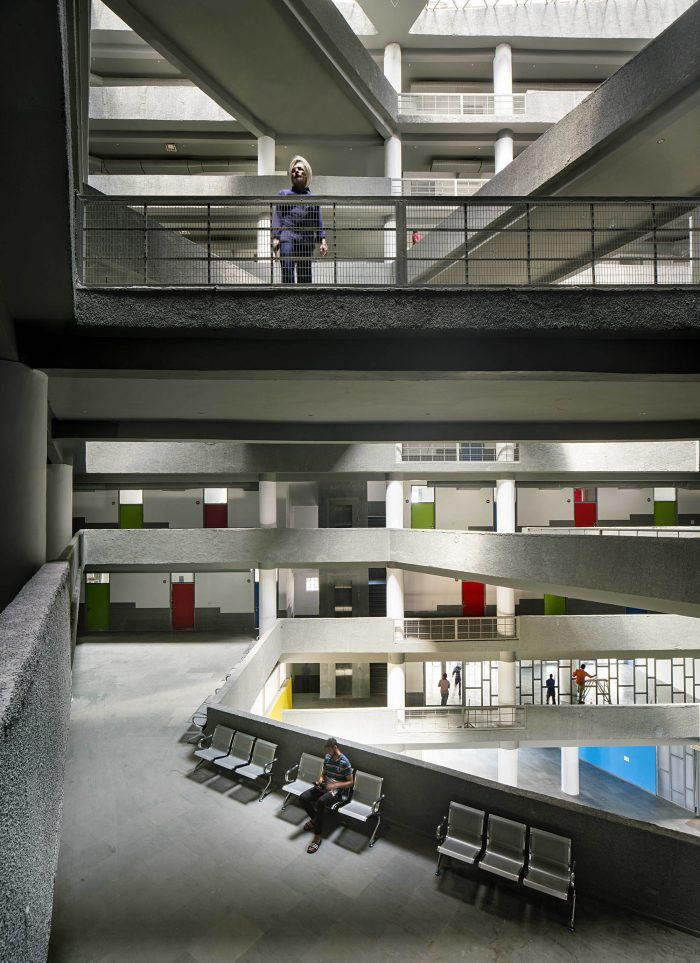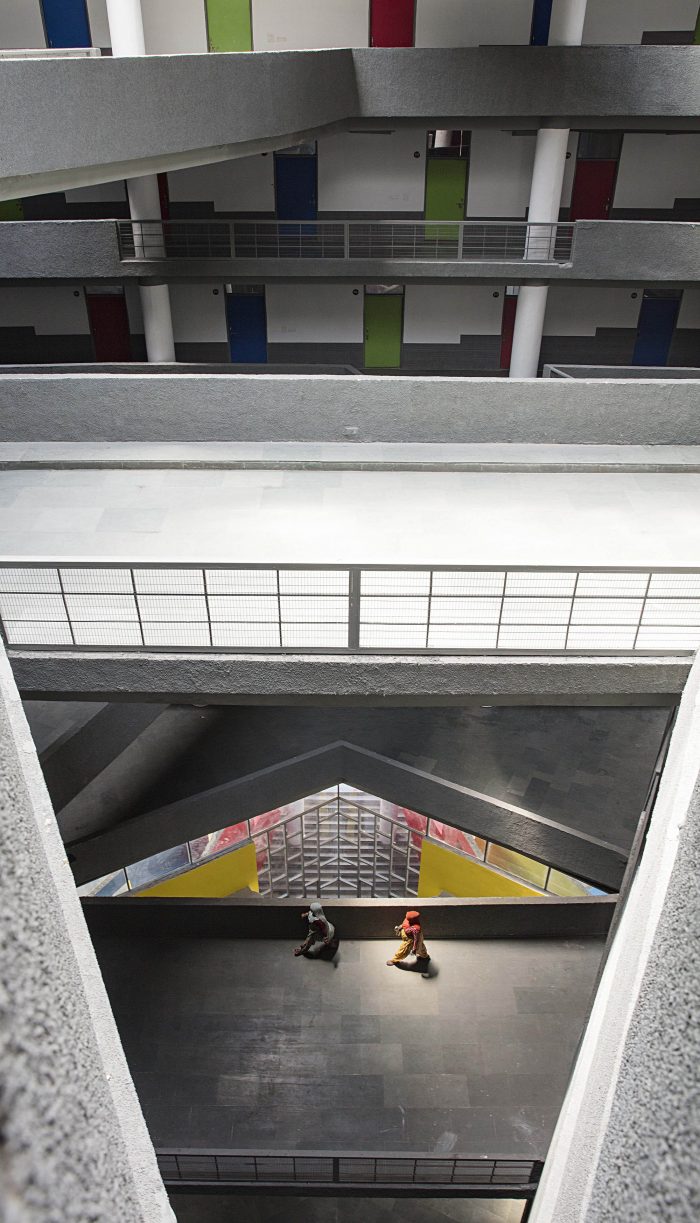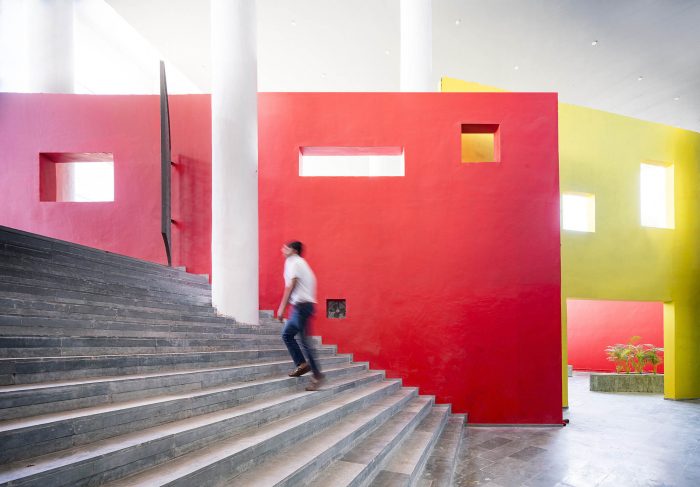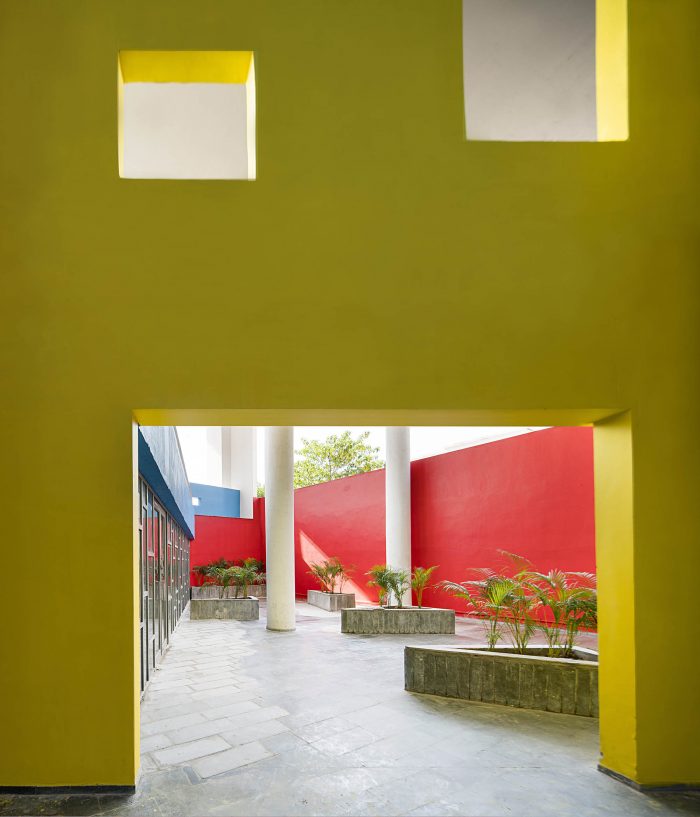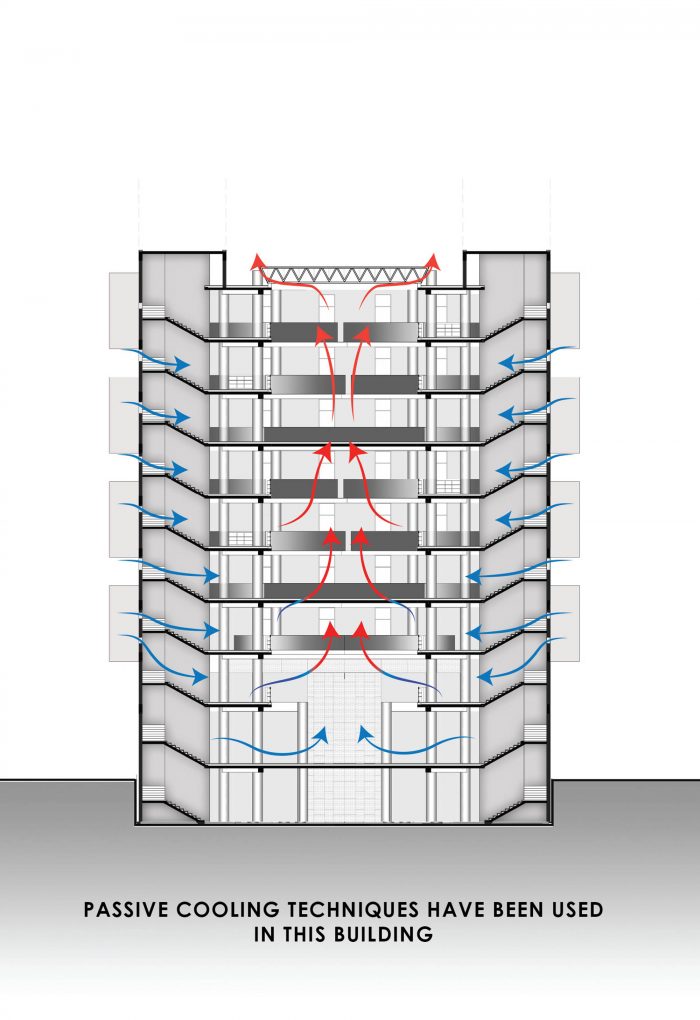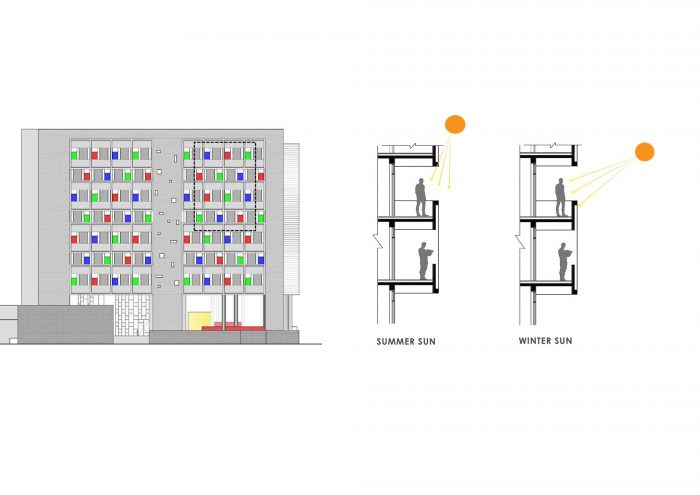该项目位于Landran,是Mohali(Punjab)附近的一个近郊城区,是Chandigarh的卫星城。昌迪加尔是一个由勒-柯布西耶设计的城市,距离新德里250公里,是印度现代主义的象征。该网站位于 “昌迪加尔学院集团 “的校园内。这是一个占地近25英亩的校园。客户选择的场地在校园内,是一个现有的绿色区域,他曾建议在那里做一个线性街区。我们选择了一个现有的公交车场,原本以为它不适合做建筑。
The project is located in Landran, a peri urban area in the vicinity of Mohali (Punjab) a satellite town of Chandigarh. Chandigarh is a city designed by le Corbusier located 250km from New Delhi and is a symbol of modernism in India. The site is located within the campus of “Chandigarh Group of Colleges”. It is a campus of almost 25 acres. The site selected by the client within the campus, was an existing green area where he had proposed to do a linear block. We instead chose an existing bus yard that was originally assumed to be unfit for building.
简要说明–在一个拥有12000名学生的校园内设计一个可容纳500名学生的男生宿舍,而这个校园现有的住宿容量为4000名学生。与该地区大多数私营机构一样,客户的主要参数是设计一个低于1500卢比/平方英尺(20美元/平方英尺)的建筑。
BRIEF – To design a boy’s hostel for 500 students in a campus, which has 12000 students and an existing residential capacity for 4000 students. Like most privately owned institutes in the region, the primary parameter from the client was to design a building in less than Rs.1500/ sq. ft ($20/sq. ft).
概念 – 概念是设计一个简单的三角形计划,可以铺设在一个奇形怪状的网站。主要的想法是在校园内设计一座没有围墙的宿舍楼,所有的生活空间都由门禁大院分割。这也将达到在一个严重缺乏有盖空间的校园中创造公共空间和设施的目的。
CONCEPT – The concept was to design a simple triangular plan that could be laid on an odd shaped site. The primary idea was to design a hostel building with no boundary walls in a campus divided by gated compounds for all living spaces. This would also serve the purpose of creation of public spaces and amenities in a campus that has a serious shortage of covered spill over spaces.
规划–整体规划是为了实现公共和私人空间的完美平衡。主要的公共空间被创造在地下室,有一个双倍高度的入口区域,一个三倍高度的下沉式庭院和直接通向前面道路的台阶。 较低的楼层,即地下室、地面和一楼都有公共空间和设施。生活空间被安排在上层。
PLANNING – The overall planning was done in order to achieve a perfect balance of public & private spaces. The main public space was created in the basement with a double height entrance area, a triple height sunken court and steps opening directly on to the road in the front. The lower floors i.e. the basement, ground and the first floor all have the public spaces and amenities. The living spaces are organized on the upper floors.
该计划被设计成一个简单的三角形,有一个大的中庭,顶部有天窗,使室内有充足的光线。三层高的下沉式庭院解决了在没有围墙的情况下产生室外空间的想法。因此,该庭院在白天成为整个校园的公共空间,而在晚上宿舍上锁后,则成为宿舍住户的户外空间。因此,从正面的入口可以通往一层楼梯,一直到地下室和下沉式庭院。而侧面的入口则是宿舍住户的主要入口,可直接通往中庭。
The plan was devised as a simple triangle with a large atrium with skylights on top to allow abundant light in the interiors. The idea of generation of an outdoor space without a gated compound was resolved by the triple height sunken court. The court thus becomes a public space for the entire campus during the day and an outdoor space for the hostel occupants once the hostel is locked at night. Hence, the entrance from the front leads to a flight of staircase that goes down to the basement & the sunken court. While the side entrance with a ramp becomes the primary entrance for hostel occupants leading directly into the central atrium.
前半部分的地面层是校园的公共空间,而其余部分则是一个大型的接待区,并有一个毗邻的餐厅和厨房设施。地下室设有可俯瞰下沉式球场的健身房、带独立下沉式球场的电视室、运动区、多功能厅和其他校园商店。楼板最小的第二层设有阅览室和行政办公室以及舍监的生活空间。
The ground level in the front half is all a public space for the campus while rest of it houses a large reception area, with an adjoin dining & kitchen facility. The basement houses the gym overlooking the sunken court, TV rooms with independent sunken courts, a sports area, a multipurpose hall and other campus stores. The second level with smallest floor plate houses the reading room and an administration office along with the warden’s living space.
学生的生活空间从第三层到第九层,每层有23个房间,每个房间可容纳3名学生。因此,7层楼共可容纳483名学生。由于重点是生活空间,所以从一开始的整体规划就是强调生活空间的质量。为了保证这一点,我们以桥梁的形式创造了聚集和溢出的空间,将每层的中庭以不同的方式分割开来。因此,这些不同的桥梁在不同楼层之间创造了一个很好的互动,也提供了一个自然良好的照明和通风的内部空间。每个房间都连接着一个有顶的阳台,但它确保了外立面与校园内所有其他100英尺高的教学楼同步。
The living spaces for the students were housed from the third to the nineth levels with each floor having 23 rooms for 3 students each. Hence, a total capacity of 483 was achieved on 7 levels. Since the focus was the living spaces, the overall planning from the beginning was to emphasize on the quality of living spaces. This was ensured by creating congregation & spill over spaces in form of bridges that bisected the atrium at each level in a different way at each level. These varied bridges thus created a great interaction between the various levels and also provided for a naturally well-lit and ventilated interior space. A covered balcony is attached to each room but it was ensured that the façade was in sync with all the other 100 feet high academic buildings in the campus.
材料调色板–整体材料调色板只限于简单的白色油漆表面和灰色砂砾表面。地板是最经济的当地石材’kota’。因此,该建筑是一个简单的几何结构,以最低的成本,但确保一个伟大的内部空间。通过使用昌迪加尔典型的Corbusieran风格的原色来增加豪华感。另外,整个建筑采用了空气冷却装置,作为设施的一部分放置在三角形的角落。
MATERIAL PALETTE – The overall material palette is limited to simple white painted surfaces and grey grit finish. The flooring was the most economical local stone ‘kota’. Hence, the building is a simple geometric structure in the lowest possible cost yet ensuring a great interior space. The luxury was added by use of primary colors in typical Corbusieran style of Chandigarh. Also, the entire building is air cooled with units placed as a part of facilities on the corners of the triangle.
建筑师:Charged Voids
面积:135000平方英尺
年份:2019年
照片:Javier Callejas
首席建筑师:Aman Aggarwal
设计团队:Rahul Vij、Sugandha Wadhawan、Javed Akhtar Siddiqui
3 D展示台:Haneet Khanna
结构顾问:Dr. I.C Syal
建筑师:Charged Voids
城市 : 112区
国家:印度
Architects: Charged Voids
Area: 135000 ft²
Year: 2019
Photographs: Javier Callejas
Lead Architect: Aman Aggarwal
Desgin Team:Rahul Vij, Sugandha Wadhawan, Javed Akhtar Siddiqui
3 D Visualiser:Haneet Khanna
Structure Consultant:Dr. I.C Syal
Architects:Charged Voids
City:Sector 112
Country:India


